The legendary actor and issue 29 cover star reflects on his craft with writer Rick Moody
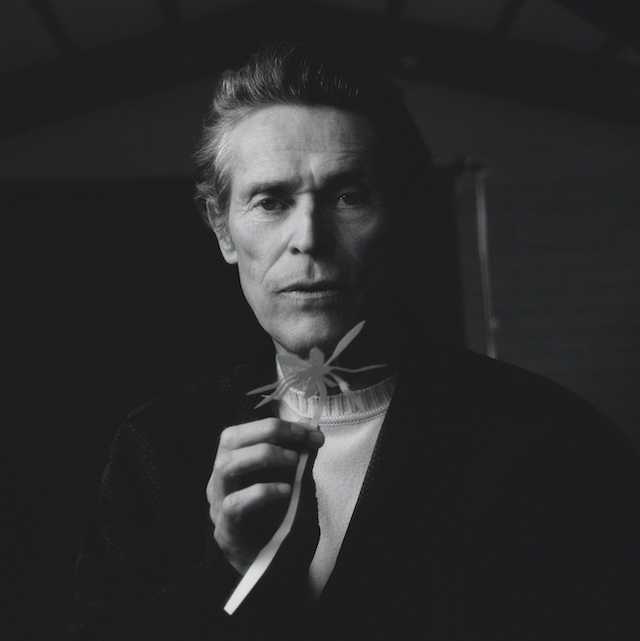
Willem Dafoe’s filmography exceeds a hundred films now. It’s the kind of résumé any working actor would aspire to. It includes work with iconic directors, movies for huge tent-pole franchises, but also the indiest of the indies, high-art projects in which he plays the likes of both Vincent van Gogh and Jesus of Nazareth. And then there’s the stage work, which includes the innovative theatre productions and classics like Eugene O’Neill. Dafoe seems to have been everywhere, and worked with almost everyone. He is, at this point, the kind of stalwart actor’s actor who is universally admired, and who prefers work to basking in outsized celebrity. Talking with Dafoe, one is immediately aware of the voice: raspy, full of colour, indelibly recognisable, and vividly alive. Offscreen there’s an easy smile, a serenity and gentleness one doesn’t associate with an actor who has frequently brought deranged villains to life. I met Dafoe once before, many years ago, when we shared a cab home from a dinner with mutual acquaintances. We talked about T S Eliot, whose work he’d been reading in preparation for a role. This time around, in the maw of the pandemic, he seemed even more philosophical, but with the same sudden capacity for energetic laughter, enthusiasm, and generosity. We talked over Zoom, just before he was heading out to do what he has done so well, a hundred times before…
Rick Moody: How has your pandemic been?
Willem Dafoe: I can’t say it was good. It afforded me a time to calm down for a little while. I was in lockdown in Italy. It was nice to be with my wife alone in quiet Rome, hearing only bird sounds in a deserted city with my days not so structured. Usually if I’m not working on something, I’m preparing for something. I got an opportunity to start thinking about, you know, what do you do with a day? I found a pretty good rhythm. Once things loosened up I started working again under Covid protocols, which aren’t ideal, but you adjust. I’ve been fortunate because in this time I’ve been able to work, and I’ve been with my family.
Was it strange being far away from the US during the pandemic?
Well, a lot of the time, I tend to shoot outside of the country. And, previously, with the Wooster Group, I was abroad a lot; so I’ve always had a little distance. Also, being a New Yorker, you normally have a distance. I admired the Italians for how they were dealing with the Covid situation, initially, as opposed to when I was in New York, where things were very confused. Later, there was a period where I was shooting Nightmare Alley in Toronto, and that was closer to the election. I got sucked into watching the news obsessively, and that was hard.
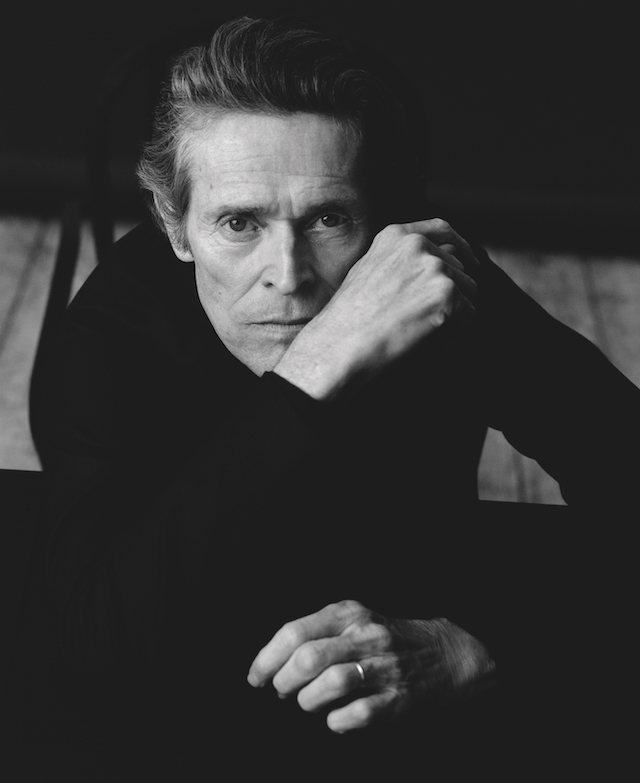
Among your recent projects (Siberia, a horror story; The Card Counter, a thriller; Nightmare Alley, a psychological drama, based on a classic pulp novel), you worked with Abel Ferrara again, and you also worked with Paul Schrader. You’ve worked on multiple projects with both these directors, and I wanted to ask about how that is meaningful for you, to work with certain film directors repeatedly. How does that long relationship create an impact with respect to your craft?
You develop a shorthand; you develop a trust. As an actor, I like it best when I’m the creature of someone who’s making a world. They want to see something, and I’m a guy who gets fed into this world. They’re whispering in my ear, and I’m trying to make it manifest. You feel like you’re doing a service, and you get away from yourself. It’s someone else’s agenda. So that’s a nice way to work. Mostly, when you start a project there’s so much sniffing around and figuring, identifying what the project is and what the sensibilities are. If you don’t have that, if you have, instead, some basis, some history, there’s a lot more love. And there’s a lot more curiosity. And I think you can go deeper. I guess that’s all pretty practical, you know. I know Abel pretty well because we’re neighbours, and we have similar interests. Paul, on the other hand, outside of work, I barely ever see him. We’re close, but it’s always in the context of work. So it’s not just about working with friends; it’s working in a situation where you don’t waste a lot of time defining terms.
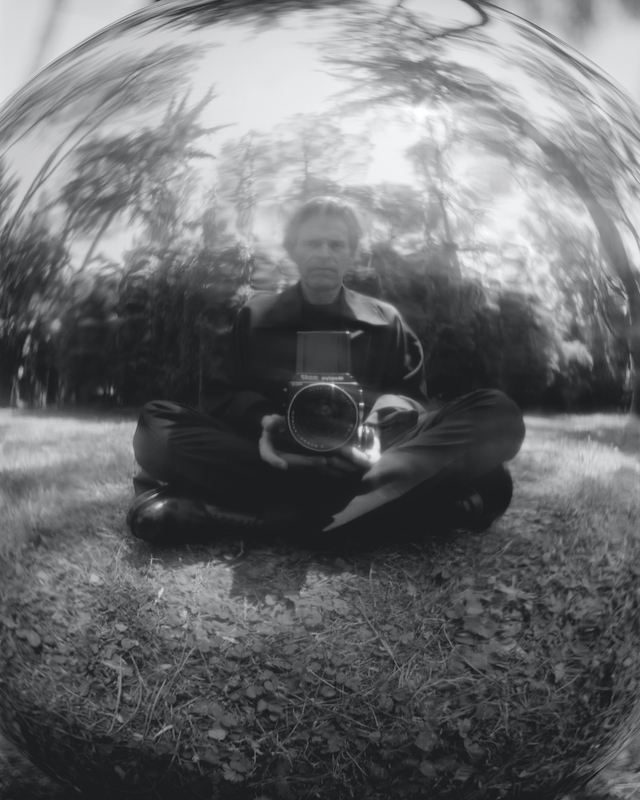
Both of these directors represent a particular idea of contemporary cinema, a kind of outside-the-studio model that is recalled in movies like Bad Lieutenant and Mishima. They are very different from the sort of spectacle-oriented model. I note that you have been a Marvel character and DC character (and will be in a Spider-Man film shortly), in various films, but these recent projects are far from that. Does that mean that you’re continuing to try to carve out projects that are outside of a sort of conventional mainstream movie making?
I feel very comfortable on the fringes. I mean, there are pleasures to making big studio movies, but I don’t get to collaborate on the same level. They’re movies made with different intentions, different resources, and different people. I like to mix it up. Home is always the place where I feel loose.
What are some examples of those past indie projects that resonate most strongly for you now?
Recent films that come to mind would be The Florida Project or Tommaso. They are dear to me because they were shot in unconventional ways and with colleagues who aren’t always professional actors. It’s an interesting challenge to drop your professional performer mindset and come to a reality that is shaped by people that are in their element and not used to performing or making fiction from their experiences. Rather than you teaching them how to perform, they teach you how to be human.
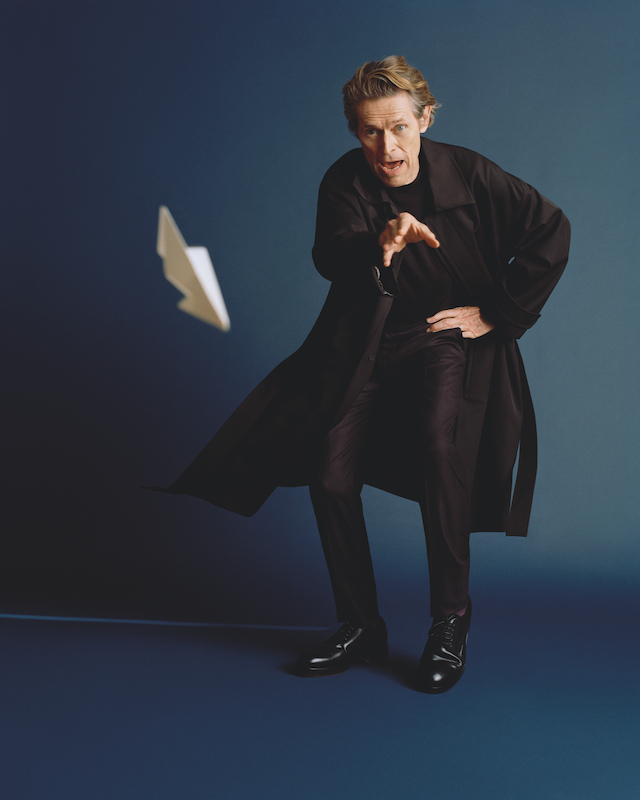
I believe you know John Lurie, the musician (Lounge Lizards), actor (Down by Law), and painter (Painting with John, now on HBO), an incredible polymath who has a great new memoir out right now, which includes a photo of you and John in its pages. I always wanted to ask you, or John, what was it like ice-fishing together in that episode of John’s first TV show, Fishing with John. It looks so fun on-screen, if, uh, cold. Do you have recollections of that time?
I remember. John and I have lost touch a bit, in his desire to sequester. But we had some very close periods. I’ve known him for a long time. Fishing with John was fantastic. John said he had some money, asked if I wanted to do it, and then he and Jim Jarmusch, myself, and I think Jamie Nares, went out fishing in Montauk to kind of play around with the idea, just to see what it would be. We didn’t use that trip for the series; it was part of the development process. He said, look, where do you want to go? We’ve got enough money that we can go anywhere. We go fishing, we shoot for three days; it is totally improvised, totally invented. I was super busy and I couldn’t do it right away. All the other guys chose tropical locations where it was very comfortable. Finally I was the last one to choose, and I thought, I’m not going to go to Thailand. I’m not going go to the Yucatán, Gulf of Mexico. It’s kind of a drag if, you know, it’s all one tone. So I said, how about Maine? I had a place there for many years. And so we went in the middle of the winter and filmed in the Allagash. It was beautiful. We’d wake up at three o’clock in the morning, have a big farm breakfast. They would be warming up the snowmobiles. We would go to location on snowmobiles in the dark. And we had some wood, and we had to build a house, and we had to catch fish, and that’s about all that we had for scenario. I haven’t seen that show in a long time, but when I saw it, I liked it. I think it was fun and captured that kind of spirit of friendship. It’s not so obvious and kind of sweet in a way. What’s beautiful about John is that when he’s sweet it’s to catch and see a real artist with a real fluid centre.
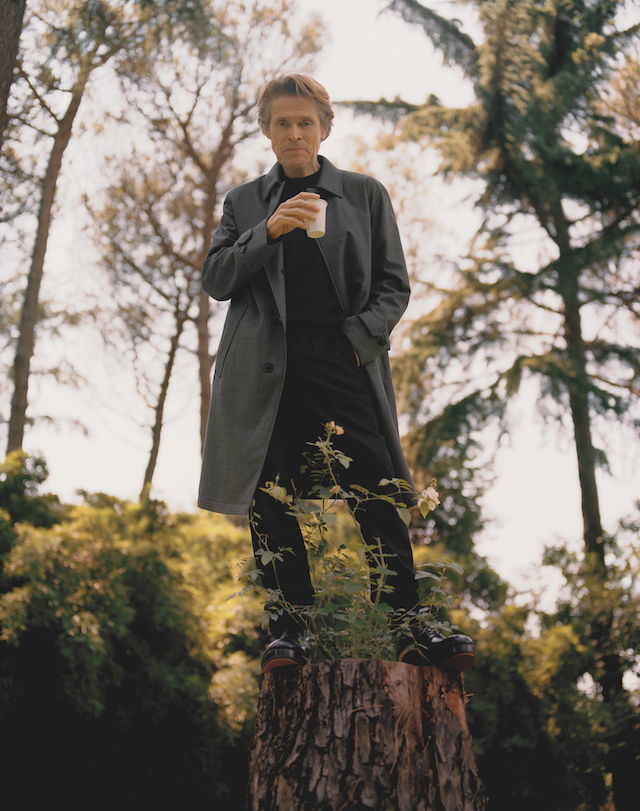
Is it correct that you have also recently worked on a solo theatrical monologue adapted from Nathaniel Hawthorne’s story ‘The Minister’s Black Veil’?
Yeah, I performed it already in two different cities (Antwerp and Naples). It’s a beautiful text. It’s basically the minister’s speech that he doesn’t make. This director is one of the best in the world, Romeo Castellucci, and this isn’t exactly typical of his work. This is more like a chamber piece, in that it’s only me. And usually he does beautiful visual things, spectacular things, high concept. He also directs a lot of opera. But this is simple. It was me dressed as a minister in a church, an actual church. In fact, I wear a black veil. You don’t see my face. The text has a lot to do with faith and ways of articulating faith. It’s a very poetic text written by his sister. I enjoyed performing it a great deal. It’s quite a complicated, poetic, and philosophical text. Every time I perform it, I have a different take, which is a beautiful thing.
The character in the Hawthorne story, Joseph ‘Handkerchief’ Moody, is alleged to be an ancestor of mine, so I know the story well. It’s exciting to hear about your version and experience. Does the story seem different to you now, in the era of masking debates and fake news?
I didn’t even think about it. You’re right. You know, I’ve been working on a lot of films with these Covid protocols and one of the most fascinating things about this whole mask thing is you can work with people for three months and never see this part of their face. And the interesting thing is your mind fills it in. You’re wearing a mask, but I know what you look like. My mind constructs a face. And then the day comes where I happen to be there as you’re eating, you take off that mask, and every time, wrong. Your mind needs to complete the picture sometimes. For better, sometimes for worse, always wrong.
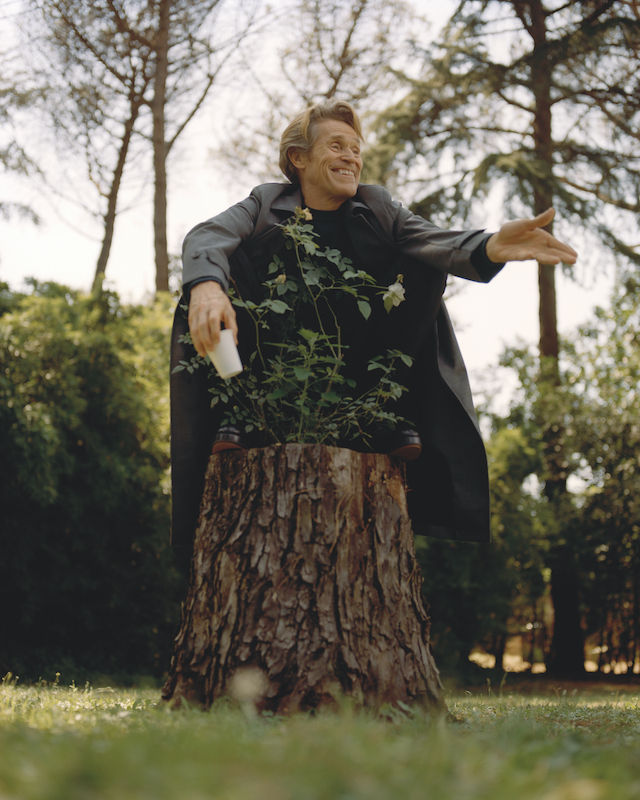
How important is theatre for you now?
Right now my plate is full with movies; I’m not thinking about theatre as much. But I hope things get better for theatre. There’s always going to be a place for it. The audience may shrink, but there is that need be in the room when something’s happening. It’s in our nature. Now there are people growing up, experiencing all their entertainment and art on phones and computers. But I still think it’s in the human DNA, a need to group around the campfire and have someone get up and do a dance or sing or tell the story.
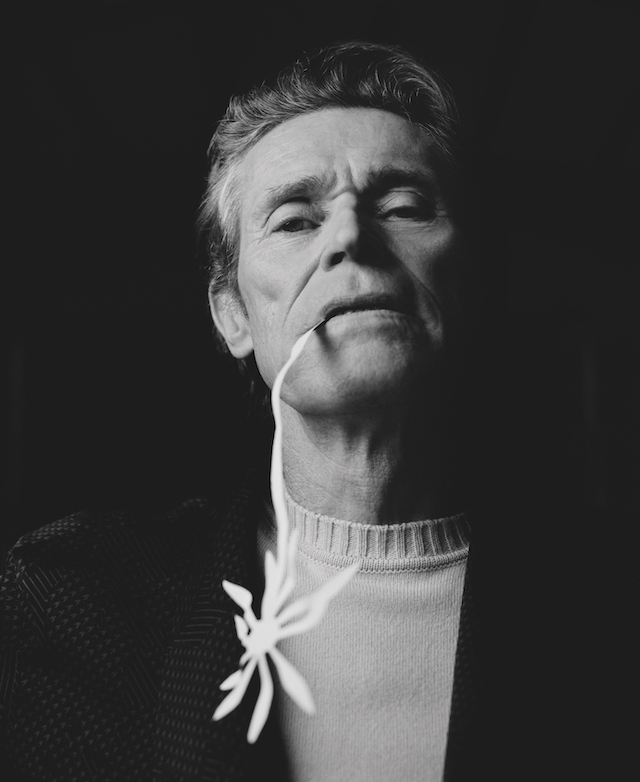
Richard Foreman, the avant-garde playwright with whom you have worked in New York, is an obvious example of that kind of theatre, the truly live iteration of theatre. It seems hard to imagine how we get back to that during a pandemic. But it’s clear how essential it is.
Richard is one of my gods. I’ve worked with him twice. I love him. He’s kind of in retirement now, slowing down. I’m never as happy as I am in front of an audience in Richard Foreman’s theatre. There’s nothing like it in the world. I love it.
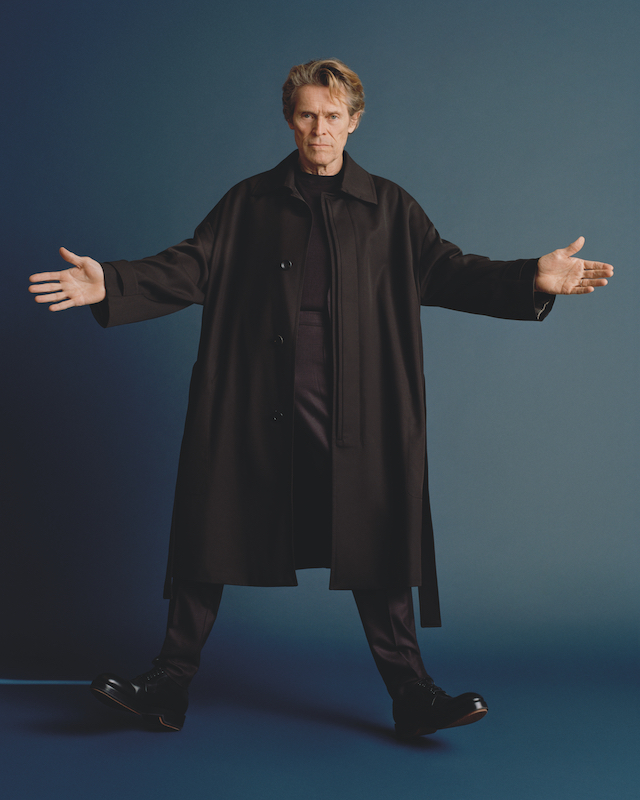
You have a reputation for roles that orbit around art and literature. Are there other stories in those areas that have been exciting for you lately?
I was going to say that I don’t read that much fiction, or contemporary literature, but, really, that’s not true. I read a lot. It’s just usually connected with work. And I would say the same thing about the visual arts. I’m always so happy when I go to a museum. I really am. It’s always a great inspiration and adventure. But what am I excited about now? In a couple of days, I leave for Budapest to shoot a film based on a novel by the Scottish writer Alasdair Gray. That’s exciting.
What does a perfect project look like to you now, if the world would open and permit something as unwieldy as a dream?
Every project is a dream project in theory, and you should try to approach all work as such, without preferential judgements. I am always looking for situations and the company of people to be free and inspired enough to make something that goes beyond what we can imagine or plan. That is the pleasure of the adventure – a shift of understanding.
Produced in collaboration with ZEGNA to celebrate their What Makes A Man campaign, a new platform for discussion on the meaning of modern masculinity
Photography Andy Massaccesi
Photo assistant Marella Bessone
Styling Alessia Vanini
Grooming Marco Minunno
Make up Samia Mohsein
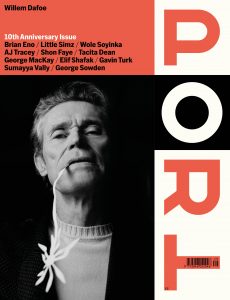
This article is taken from Port issue 29. To continue reading, buy the issue or subscribe here